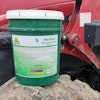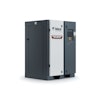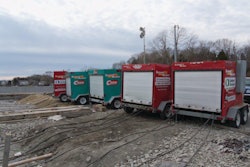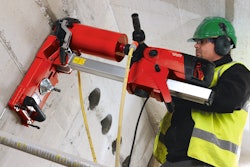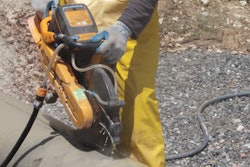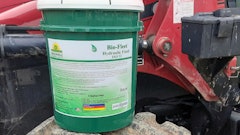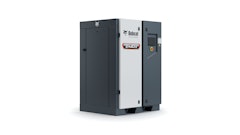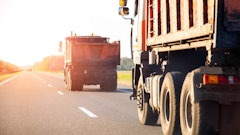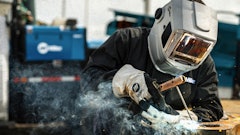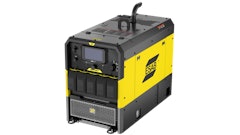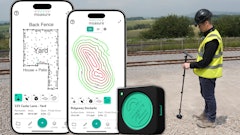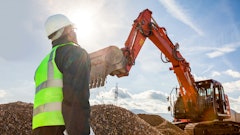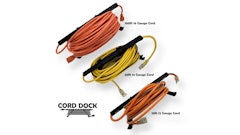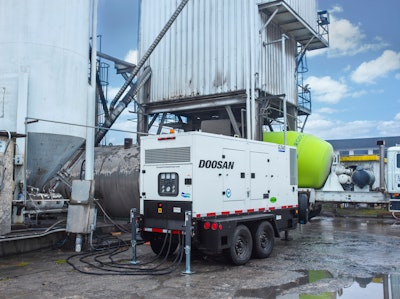
When we hear the word “telematics,” most of us associate it with earthmoving equipment, because those machines have an obvious user connection and it’s easy to imagine someone noticing a fault code and doing whatever is necessary to keep the machine up and ready. But what about machines like generators and compressors, and even light towers? These machines are arguably the engine running the jobsite, so to speak, so the importance of monitoring their performance and well-being is undeniable. Telematics on a generator or compressor? Is that even a thing? It turns out it actually is.
“Our machines don’t have the constant user integration that a skid steer or an excavator do, so the benefit becomes a little different,” explains Todd Howe, global generator products manager with Doosan Portable Power. “No one is watching a compressor or generator work, so a lot of times, dashboard info goes unnoticed on the day-to-day use of the machine.”
Not for long, though. Some manufacturers are bringing telematics technology to generators and compressors and the reason is simple: their customers are asking for it.
“It’s getting legs from fleet customers in the rental industry,” says Howe. “It’s definitely more pull than push these days from the really big fleet guys and the fleet guys working in challenging, complex, remote applications, like oil and gas.”
He continues, “We’ve seen broad moves from United Rentals, which mandates telematics fleet wide, generators included. Their initiative seems to be around machine monitoring and health to keep customer satisfaction up and even prevent customers from being aware a problem is about to happen. But it’s also being driven from the back office, where they’d like to eliminate some functions by letting telematics interface directly with their business system. For example, when a unit is returned to the yard, GPS senses it’s back in the yard and automatically triggers a work order to get the machine ready for rent; no need for a person to go out and read an hour meter or try to figure out what needs to be done.
“It can also automate billing, factoring in customer usage,” Howe continues. “Maybe the machine went from single-shift operation to ‘round-the-clock operation… billing can now be automatically adjusted. And there’s a maintenance aspect of that too, which can help rental companies manage their technicians more efficiently.”
Dan Petraszak, associate engineering supervisor at Generac Mobile Products LLC, agrees that it’s common to see telematics on generators and compressors owned by national chains, which use their own proprietary systems.
“For independent rental companies, there are many after-market telematics and software providers, and such technology is becoming more affordable,” he says. “Generac installs telemetry on virtually everything we produce. There are many different levels of complexity that will go into each system, so they’re typically matched between cost of ownership and cost of the telemetry system.”
“Ultimately, customers are finding out that sustainable productivity is supported by ensuring the machine is where it’s supposed to be, is running at maximum efficiency, the situation or site application can be monitored remotely, and any problems can be mitigated before they can have any impact,” says Alan Dutton, product marketing manager – aftermarket at Power Technique North America LLC, makers of Atlas Copco equipment, which uses Fleetlink telematics on its generators, light towers, compressors and pumps. “Telematics is a broad enabler. Real innovation is happening every day.”
What are we looking at?
Today’s telematics can track just about anything, if that’s what you want.
“What a customer chooses to see is based on the complexity that is required, given the size of equipment and user application,” says Dutton. “This could be simple things like run hours or GPS location. Productivity can be monitored with information such as fuel usage and machine loading and monitoring vital parameters. Service status is supported by notification of error codes and check engine lights. Even functions exist where a machine can be remotely locked out to shut down or prevent starting. This could be used to protect the equipment or application from an unsafe operating condition.”
Howe says the sky is the limit on the information telematics can provide, so it really comes down to what the customer wants to spend on data transmission. “Hardware can certainly monitor every single data point on a generator and communicate that info out. But the more info being communicated, the more data costs go up. It’s just like a cell phone,” he explains. “The customer has to determine what info is critical to them and how often they need it updated, and what they’re comfortable spending on data. Some customers just want machine location – for both asset tracking and theft prevention purposes – as well as hours and key switch (is it running or is it off?). They might want it hourly, every 12 hours, or just once a day. That’s kind of what we see as the minimum. Others want to see the full dashboard – all engine parameters, fault codes when something goes wrong, all generator data like volts, amps, frequency, that sort of thing. There’s certainly hardware to do that, it just becomes a matter of what the expectation is.”
He continues, “We see rental companies interested mostly in fuel levels and fault codes, which give them an extra bit of time to react before the customer finds out they’ve had an outage. When your customer calls to tell you your equipment’s down is whole different deal from when you call to tell them ‘We have a yellow light, I’m bringing another machine out and we’ll be there in a hour, we’ll make this minimally disruptive for you.’”
Petraszak notes information gathered through telematics helps increase equipment utilization. “By using equipment health data, rental companies can get equipment ready for rent faster, as well as help make proactive repairs,” he says. “Telematics help the company know where their equipment is at all times and optimize fleet equipment purchase selection based on utilization trends.”
According to Dutton, telematics can be thought of as a kind of radar. “Typically we think of rental companies using telematics for fleet management, to check run hours or make sure of location,” he notes. “But if we really take a step forward and think of providing value to the end user in the form of accurate planning and reliable machinery, and back that up with a solid guarantee that if something goes wrong that someone is already fixing it before the customer even finds out there is a problem, then we begin to see how telematics in general can continue to reshape how we do things in the industry.”
But what about all that data?
One aspect of telematics that is becoming more of a conundrum is data warehousing. It’s one thing to keep track of machine location and hours used, but what happens when you’re tracking multiple functions on dozens or even hundreds of machines? Where does the data go and how is it made useful and understandable to equipment owners?
“That’s really the primary reason you’re seeing companies the scale of United Rentals leading the charge. There’s already a significant hardware and data cost, but then they have to figure out what to do with all that data,” says Howe. “You’re talking about a company that could have upwards of 20,000 pieces of connected equipment all talking to the manufacturer daily. Imagine the amount of data. If we don’t know how to make use of it, and make it work for the company, it’s kind of a waste in a lot of ways.”
“System and install cost will vary with the complexity of the system,” Petraszak adds. “Generally speaking, the cost ranges from a few hundred to a few thousand dollars for the hardware. A great deal of the cost is in the data plan that is selected for each unit. Price for the data plan is based upon how much information is being reported.”
Predictions for the future
Telematics is not new, the technology has been around for years, but like a lot of advancements, it can take a while to trickle down to everyone and everything.
“I feel like there’s been recent acceleration in adoption,” Howe says. “For generators and compressors, it’s happening is a slightly different way. The customer’s definitely pulling it. Most manufacturers have limited amounts of resources to do everything that’s possible with the data. There really needs to be a data strategy before a company says, ‘Aha, that’s why we want to do this.’”
As our homes and work spaces become more connected, adoption of telematics on generators and other equipment is expected to grow, Petraszak says.
“The data gathered through telematics allows rental companies to operate more efficiently. For instance, a rental company can get alerts on run hour overages and proactively contact the customer. The company can add new service offerings based on usage and failure data analysis. The rental company can retain profitable customers with usage analysis and loyalty programs,” he says. “And the use of telematics also offers great value to rental customers. Telematics will continue to drive advanced diagnostics and real-time operator support, making equipment easier to operate and allowing for more uptime on the job.”
Dutton agrees, adding, “We live in a connected world full of data and information. Telematics allow generators and situations to be monitored in real time where decisions are needed in minutes, not hours or days. Generators and light towers are usually used in applications where power and light is required to be available and dependable. Telematics can allow rental companies and service providers access to the information used to support the critical nature of customer applications.”

